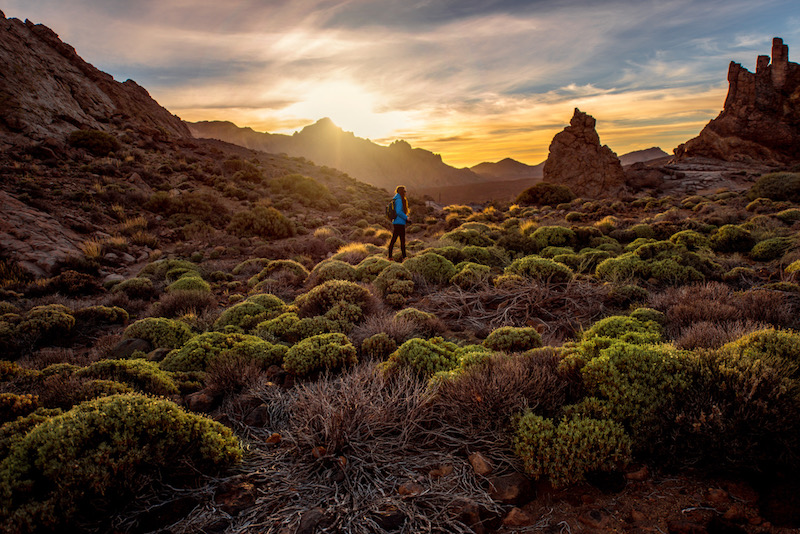Matthew Hirtes battles the elements in Spain’s higher reaches, as he takes on the country’s highest mountain in Tenerife’s Teide National Park…
Nobody ever said it was going to be easy. It’s long been my ambition to scale the heights of Spain’s tallest mountain, Tenerife’s Teide. But reaching the 3,718m peak has proven somewhat of a challenge.
The first time I looked set to climb Mount Teide was early last year. A friend on the island invited me over from neighbouring Gran Canaria, where I’ve resided since the noughties. My hopes were crushed, however, when I arrived at the airport and he informed me that due to low visibility, access to climb Mount Teide had been closed.
Returning in November 2018, I found myself removing the extra layers recommended as snow had not as much dusted the peak as engulfed the whole mountain like somebody opened a giant bag of icing sugar and poured. The group included myself and a couple of Spanish engineers, Diego and Inés, who were visiting the island from their Warwick base. We were all struggling to keep up with experienced instructor Cao Sánchez Serrano from Anaga Experience. A witty raconteur, his tongue was forever placed firmly in cheek, while ours were hanging out in canine fashion, particularly as the sun had very much come out on a sub-tropical island more known as a beach rather than active holiday destination.
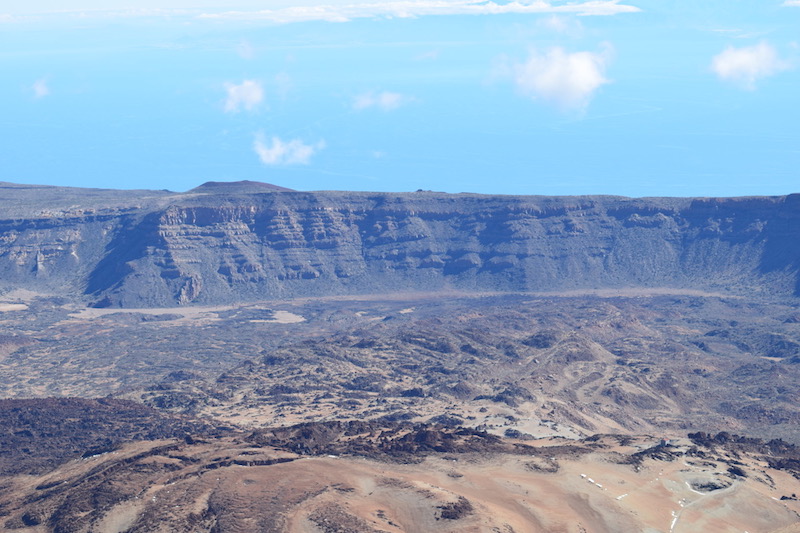
Tenerife remains a long-time favourite with the bucket-and-spade brigade. But even they get to know that there’s plenty to see beyond the resorts. Although many don’t feel the ‘turf’ of Teide underneath their feet or the surf of the Atlantic, Cao told us of accompanying tourists on the cable car whose choice of T-shirt, shorts, and flip-flops prove too flimsy a protection against the gusts they encounter above.
A day earlier, I arrived at Tenerife South (there are two airports on the island) and transferred to Vilaflor de Chasna. Located 1,400m above sea level, it’s Tenerife’s highest settlement.
I was booked into four-star accommodation at Hotel Spa Villalba. The driver apologised for dropping me off at night, as it was impossible to make out the hotel’s stunning setting. After a hearty dinner, I took an early night in preparation for a Sunday morning date to climb Mount Teide.
And so after a light breakfast, I ventured outside to see what all the fuss was about and discovered the hotel has a pine forest for a garden. Returning to reception, I encountered Cao heading in. We picked up Diego and Iñes and then set off to Montaña Blanca, the start of our ascent to the summit.
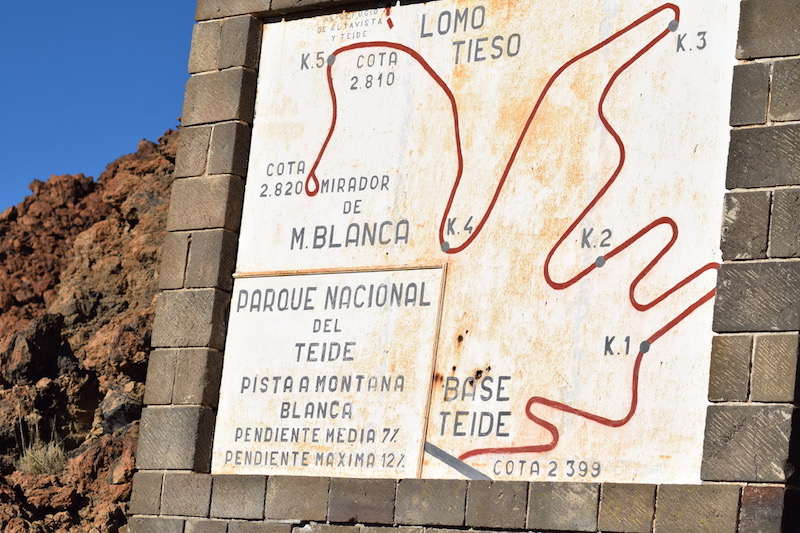
The gentle beginning lulled us into thinking we were in for a walk in the park, before the overlooking Teide, a doppelganger for Mount Fuji when topped with snow, unsubtly reminded us of the angle of our elevation.
The only way was up, but the trek was in no way monotonous, as there are plenty of landmarks on and off the trail to look out for. The first up were the poetically-named Huevos del Teide, which reimagines the mountain as a giant mother hen laying eggs. Though, these huevos are less organic materials containing embryonic chicks and more Jerry-Lee-Lewis-style great balls of fire. The product of some long-time-gone volcanic activity, they’re encased solidified lava. Because of their weight, they rolled down the mountain like snowballs; streaking past and over the underlying molten lava.
Tenerife has not always been Spanish. Indeed, before the protracted 15th-century conquest, the island was occupied by the Guanches. These goatskin-wearing Neanderthals still living in the Stone Age descended from Berbers and their pre-Arabic name derives from guan meaning person and Chinet, which is how they called Tenerife.
From the Guanche perspective, Teide was more a mythical location than a geological phenomenon. It was their hell, home to the demon Guayota, who was imprisoned there by the good god Achamán. Nevertheless, archaeologists have found remains of edible offerings to Guayota placed there by locals looking to placate their devil and prevent any angry outbursts.
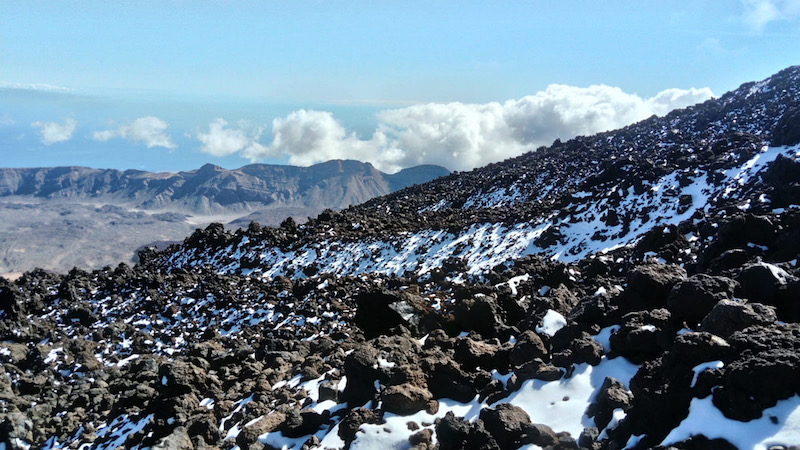
Cao explained that, despite a long and bloody resistance to invasion, post-conquest Guanches converted quite readily to Christianity, and the main reason for that was that they didn’t reside in a pantheistic world. Just like God and the Devil, they believed in a two-way battle between the forces of good and evil.
Our next landmark was the Refugio Altavista. This altogether-more-prosaically-monikered refuge indeed offers a high view. We stopped off to sit on the external benches and chomp on bocadillos (rolls) Cao purchased for us in his Vilaflor bar of choice earlier. You can stay overnight at the refugio. It’s a popular option with those who want to marry experiencing dawn with an exhilarating hike to Teide’s peak. With the temperature dipping as we continued our ascent, like mutant onions we reapplied the layers we’d previously peeled off.
There was more snow underfoot with each and every step and I soon felt like I’d been transported to beyond ‘the Wall’ in a world akin to Game of Thrones. Winter was no longer coming, it had definitely arrived, and it had turned me into a less hirsute Jon Snow more preoccupied with keeping my footing than the vague threat of any White Walkers making their presence felt in our immediate vicinity.
On the Saturday of my arrival, the cable car had been closed because of flurries, which Cao reliably informed were early in the winter season. He was, however, heartened by the reopening of the service in time for Sunday morning. Not that we were taking that shortcut up.
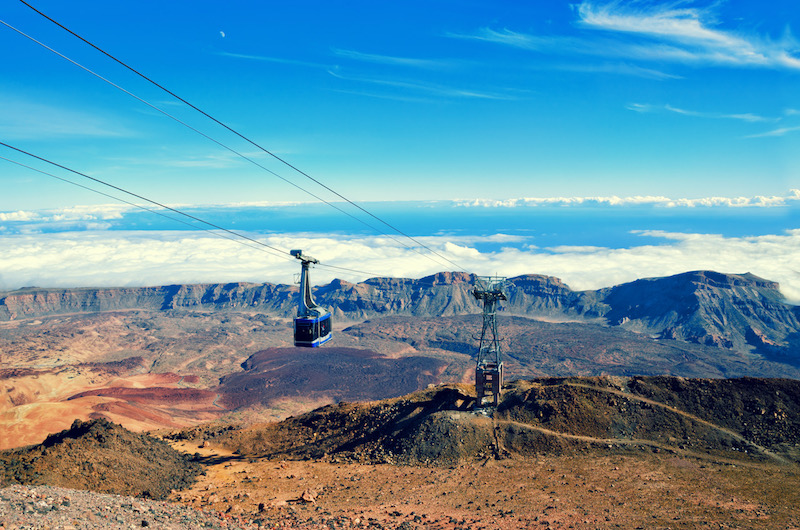
Things got even more like Game of Thrones when a raven started to circle above our heads. It didn’t get close enough for us to determine if it’s in possession of three eyes though. So we may or may not have received a flying visit from Bran Stark, but its appearance did prove ominous.
As the bird veered off into the direction of the peak, Cao became surprised that the path appeared to have emptied of people. To continue past the cable car’s upper limits, you require a special permit. These are limited and if you’re travelling to Tenerife independently, you will need to book months, rather than weeks in advance. However, Cao is one of the few registered guides to offer hikes in Teide National Park, and he had arranged four passes for us to continue to the peak. Although ever so slightly shattered, our party drew on adrenaline to inspire us to keep trekking further up the mountain.
But the park rangers had other ideas. Like particularly stern bouncers, they insisted that, while our names were down, we wouldn’t be allowed to climb Mount Teide today. The problem was the weather. The path had been closed because, although going up is relatively straightforward, snow had started to thaw into ice, making going down a slippery, potentially treacherous affair.
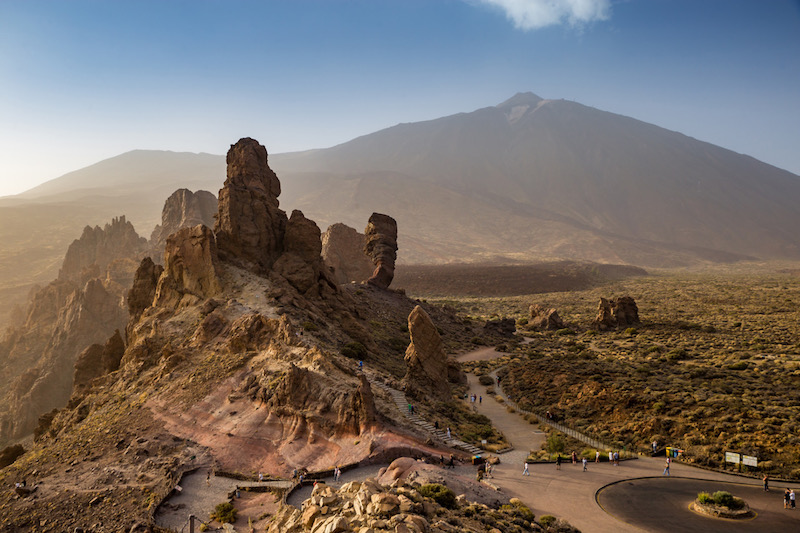
Disheartened, we bid a hasty retreat on the cable car. To lift our spirits, Cao drove us to the nearby Roques de Garcia. This formation is a cross of Australia’s celebrated Ayers Rock and the Grand Canyon. Garcia’s Rocks are a form of time travel. Look one way and you’ll see how the area used to be, look the other and you’ll see how that same spot will look in years to come. It was a mind-bending mix of past, present, and future.
Another disguised blessing was my earlier return to the Hotel Spa Villalba, where I took advantage of a freer afternoon by hitting the sauna before retiring to the reading room and a log fire. I contemplated Cao’s assertion that the Guanches were right in viewing Teide as a capricious beast. Who knows, perhaps a third attempt will bring me the luck to finally climb Mount Teide?
Climb Mount Teide: How to do it yourself
How to get there
As Tenerife is one of the Spanish islands most frequented by tourists, there is no shortage of flights from UK airports. Flights can be had for as little as £75 return from London, or just over £100 from regional airports. Flight times are around the four and a half hour mark.
When to go
Tenerife’s high season is winter, with northern Europeans escaping the Arctic chill of their homelands. The lower season sees more Spanish visitors who are fleeing the heat of the peninsula for the more spring-like temperatures of this Canary Island. Considering the risk of snow scuppering your final ascent, aim to climb Mount Teide between late spring and early autumn.
How to do it
Hire a car to reach the start of Hiking Trail seven at Montaña Blanca or book onto an Anaga Experience tour. If you fancy a DIY experience, reserve your Pico de Teide access permit online in advance. You can also book a stay in the Refugio Altavista through Volcano Teide Experience.
Who’s writing?
Matthew Hirtes has become addicted to island hopping in the Canaries since relocating to Las Palmas de Gran Canaria in 2004. The last 15 years have seen him travel to all eight of the islands. From the green, green grass of El Hierro in the west to the Martian landscape in easterly Lanzarote



